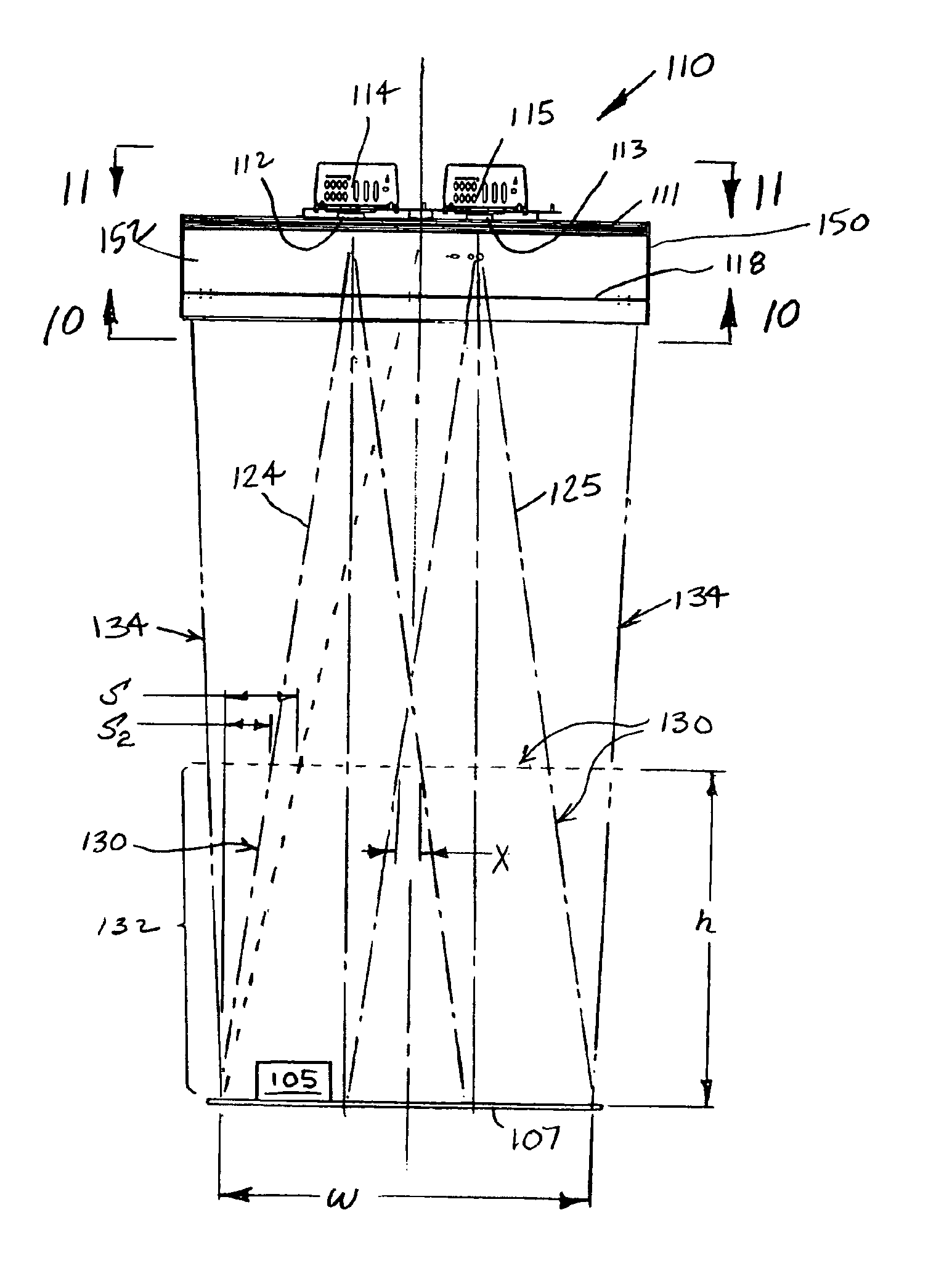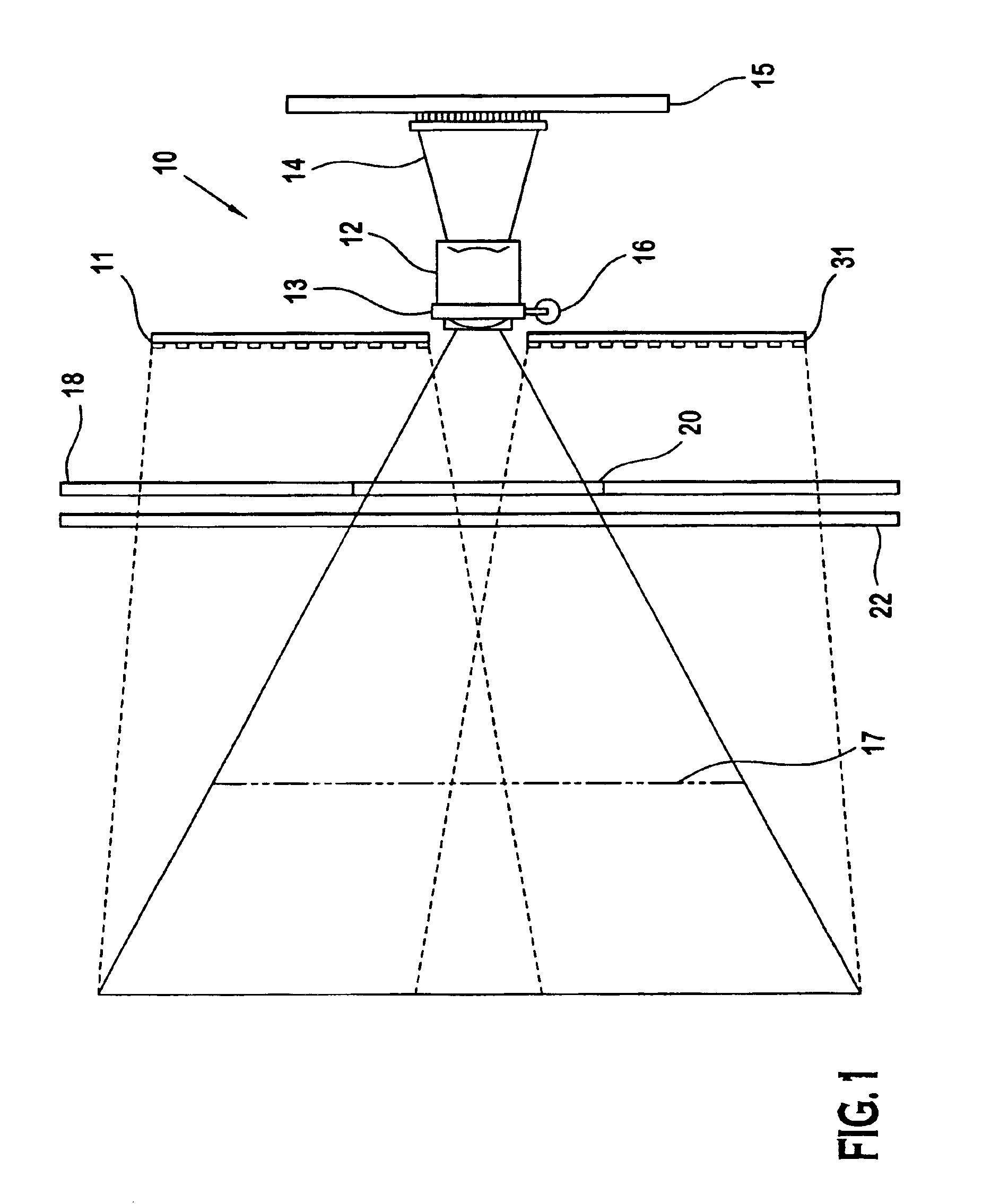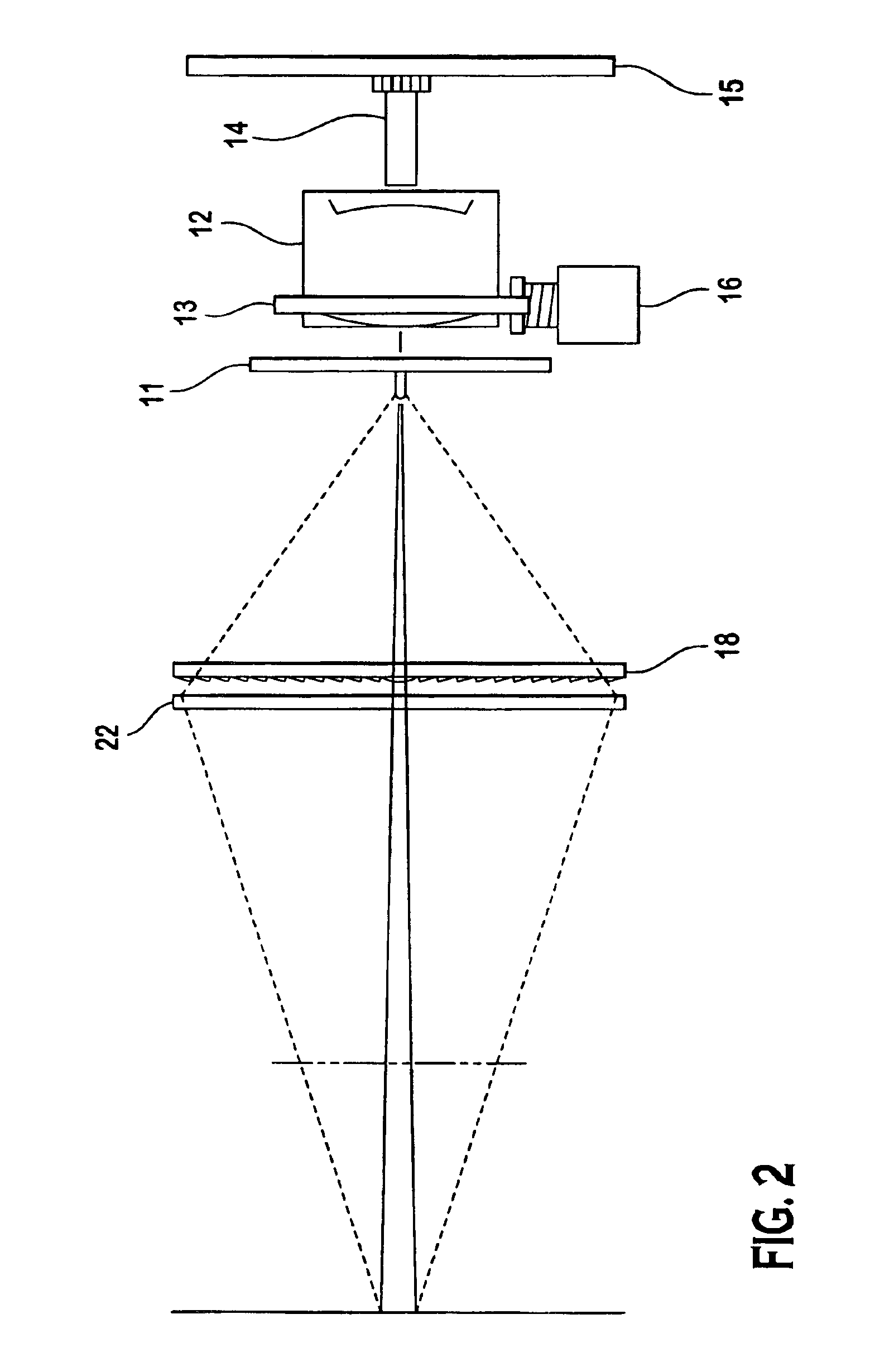Coplanar camera scanning system
a scanning system and coplanar camera technology, applied in the field of optical scanning systems, can solve the problems of increasing production costs, causing heat, and hazard to workers working in the vicinity of scanning systems, and achieve the effect of broader imaging and more uniform scanning resolution
- Summary
- Abstract
- Description
- Claims
- Application Information
AI Technical Summary
Benefits of technology
Problems solved by technology
Method used
Image
Examples
second embodiment
[0031]Referring to FIG. 4, the present invention uses an off axis light source 40 which is located off the camera lens axis and the linear array sensor, as represented by lines 43. The off axis light source 40 illuminates a target object by directing a beam of light onto its surface. However, the focused illumination stripe 44 is coplanar with the camera lens axis 43 and the linear sensor array at the required depth of field. The off axis light source 40 is preferably a movable array of LED sources 45 adapted to provide light to the target object. The invention, however, is not limited to this particular configuration or light source, as those skilled in the art will recognize alternative light sources from those described, such as semiconductor lasers, may be used.
[0032]The light source 40 may be focused by using an optional lens 41. The lens 41 may be any optical type lens, although a Fresnel lens is preferred. A light source positioner 42, preferably in the form of a controllable...
third embodiment
[0034]Referring to FIG. 6, the invention is shown which includes multiple arrays of light sources 51 which are located on one or more circuit boards 52 placed off-axis to the lens 53 and the linear array sensor. A range finder 50 is connected to the array of light sources 51. The range finder 50 determines distance between the camera and the target object. The distance data is sent to a controller which then powers on or off selected arrays of light sources 51 focused to a corresponding depth of field 55, 55′, 55″, 55′″ providing an illumination stripe 56, 56′, 56″, 56′″ coplanar to the camera lens axis 57. The camera 53 and lens 54 detect the reflected light from the illumination stripe to read required data from the object. Alternatively, all of the light sources 51 may be activated to provide the desired illumination stripe at any depth of field, eliminating the need for the distance to the target object.
fourth embodiment
[0035]Referring now to FIGS. 7-12, a system 110 for scanning an object 105 in an object scanning area on a support surface 107 is shown. The support surface 107 is preferably in the form of a conveyor or other moving surface upon which objects are carried. The system 110 includes at least two linear array sensors 114, 115 to detect light input signals. A sensor lens 112, 113 is optically connected to each of the at least two linear array sensors 114, 115, with each of the lenses 112, 113 being adapted to receive and transmit an optical image located in a respective optical field of view 124, 125 to the respective one of the at least two linear array sensors 114, 115. A light source 111, similar to the light source 11 described above is also provided, and is preferably in the form of an array of LEDs or an array of semiconductor lasers, as shown in FIGS. 9 and 10. The arrays are preferably linear and are directed toward a lens 118, which is preferably in the form of a cylindrical len...
PUM
 Login to View More
Login to View More Abstract
Description
Claims
Application Information
 Login to View More
Login to View More - R&D
- Intellectual Property
- Life Sciences
- Materials
- Tech Scout
- Unparalleled Data Quality
- Higher Quality Content
- 60% Fewer Hallucinations
Browse by: Latest US Patents, China's latest patents, Technical Efficacy Thesaurus, Application Domain, Technology Topic, Popular Technical Reports.
© 2025 PatSnap. All rights reserved.Legal|Privacy policy|Modern Slavery Act Transparency Statement|Sitemap|About US| Contact US: help@patsnap.com



